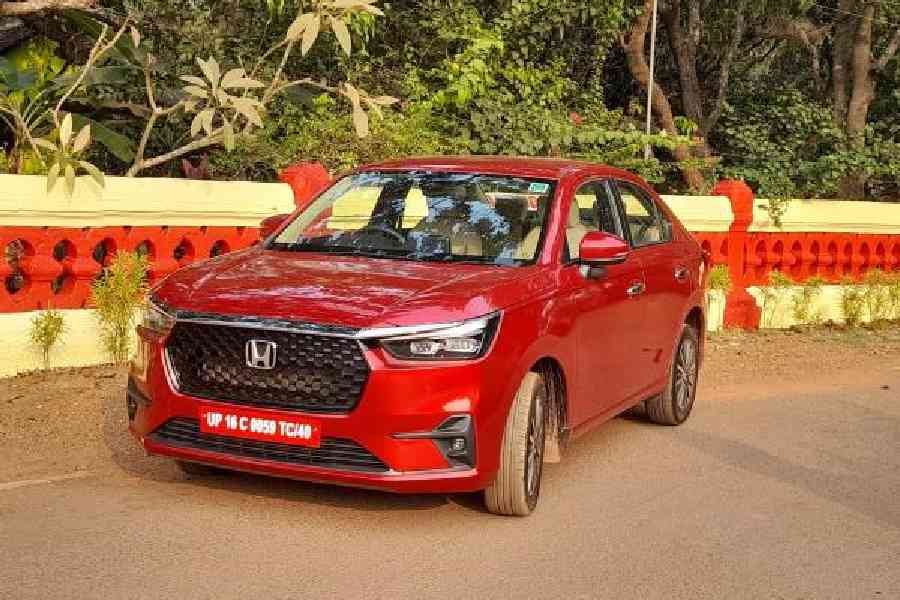When the first generation Honda Amaze hit the market about a decade ago as a sub-4m sedan derivative of the Brio hatchback, it nonetheless impressed with things like ride and handling, space and overall build quality. Two generations later, Honda has managed to retain much of that goodness in the third generation Amaze that it rolled out last month, while a lot else has changed and improved. And now it has also come loaded with segment-first active safety features.
t2oS got to drive both the manual and the CVT automatic at the invitation of Honda Cars India and here are our impressions of the new model. Read on.
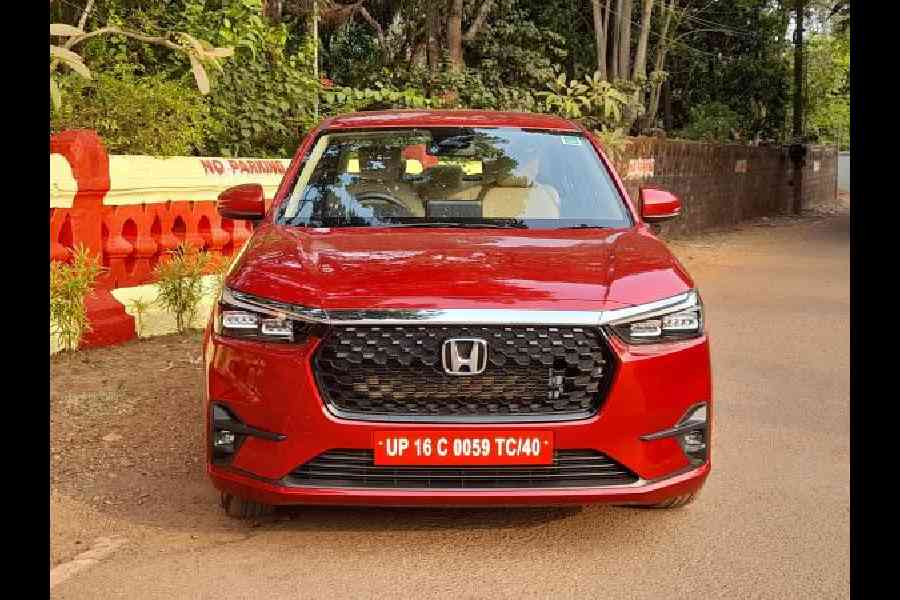
The front end of the new Amaze resembles that of the Elevate with the prominent grille and narrow LED headlamp clusters
ON THE OUTSIDE
Now this is a subjective thing, but we think that the third generation Honda Amaze is by far the best looking one yet. We could never quite come to terms with that heavy chrome bar up front in the previous generation. Thankfully, that is much slimmer this time around. With the front end taking design cues from the company’s Elevate SUV there is a prominent grille flanked by slim headlamp clusters. It also has the very square SUV-ish look emphasising width. Overall, we liked the styling. If the front end harks to the Elevate, the rear end resembles the City, particularly the tail light cluster design, which isn’t a bad things since they are pretty nice looking. The profile is pretty much similar to that of the previous generation Amaze, which was a clean and uncluttered design to begin with. What we do think, however, is that the car needs a touch of chrome at the back and on the sides to balance out the front end. While those don’t come as standard, there is an add-on Signature pack that can do the trick for you.
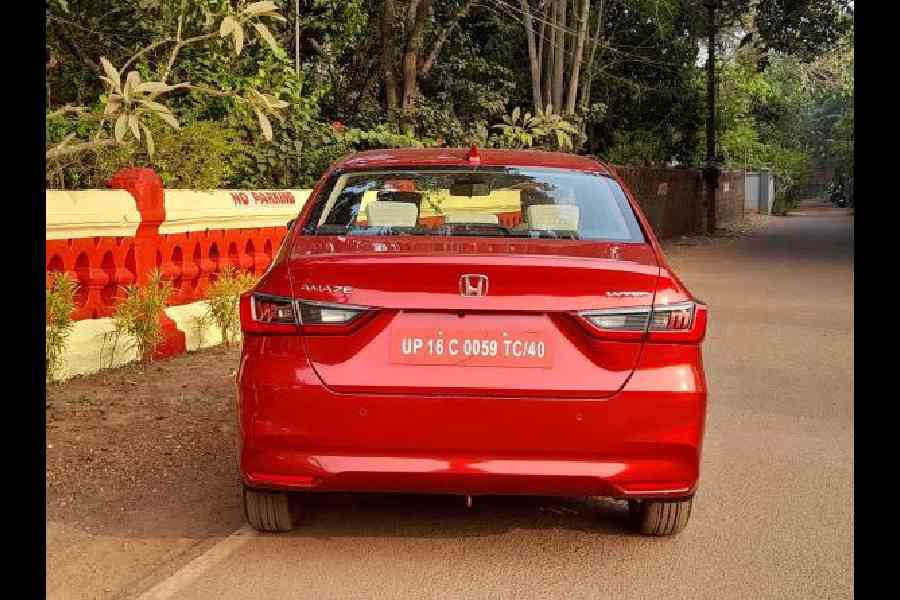
The rear end of the new Honda Amaze looks a lot like that of the City, especially the tail light clusters
ON THE INSIDE
There is more similarity here with the Elevate SUV in terms of design, which is significantly better and looks and feels more premium, if comparatively more minimal, than that of the previous generation car. The beige and black colour scheme works well. The seats are excellent in terms of both bolstering and cushioning and very comfortable to be in for extended periods. The rear seat is comfortable and both rows have ample head and leg room. The centre passenger in the rear also gets a three-point belt, but the head rests are not adjustable.
The large glass areas make the cabin quite airy. Inserts in the dash create just as much highlight and texture as required. The overall focus seems to be on simplicity and functionality without being conspicuously so. The versions we drove came with wireless chargers as well apart from USB sockets. And the rear air conditioner vent helps keep things comfortable in that area. There is lots of strorage for bottles and small items all over the passenger compartment. Boot capacity is a decent 416 litres and it has a clean shape.
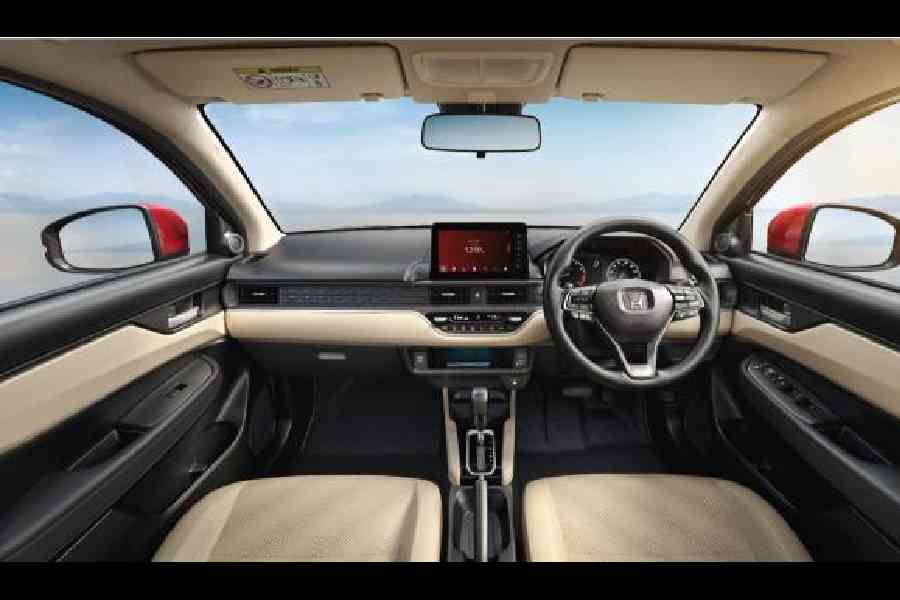
The beige and black interior is minimalistic in design but feels premium with good materials all around
The infotainment screen is an eight-inch one and supports Android Auto, Apple Car Play and Alexa. It is easy and intuitive to use. We particularly liked the instrument cluster’s white on black display. It was very easy to read on the go. The left half of the cluster is a screen that can be variously configured and provides readouts for things like seat belt and parking sensors to G Force and the Active Driver Assist System (ADAS).
ON THE ROAD
Driving the new Amaze isn’t different from driving the previous second generation one and that’s not a bad thing. The powertrain is the same 1.2-litre i-VTEC with the same power output of 90ps and 110Nm and does its job very matter-of-factly. For the best of refinement, it should ideally be under 3,000 rpm, maybe 3,500rpm. At those speeds it behaves as if it can drive on for ever. It’s not intrusive, not short on shove and throws no surprises. Beyond and towards the redline of 6,000rpm, things start getting a little rough and noisy. This is after all a small-ish engine, that, while rev-happy, does let know that it’s working hard when pushed. The CVT manual works quite well in slow traffic, but you could find yourself reaching for the paddle to downshift quicker than the car does sometimes in tighter situations. Alternatively, one could get into the Sport mode to improve the urgency of response from the car. The manual is slick as typical of Hondas. In fact, it one blows fuel efficiency to the winds, it can be a fair bit of fun to use.
The Amaze is the first car in its segment to have ADAS. It does take a bit of getting used to. For instance, if one tries to change lanes without using the indicator, the Lane Keeping Assist will try to give a little torque to the steering to keep the car in the lane. In India’s chaotic traffic and with the lack of road markings, it could falter sometimes, but it does help. The Amaze comes equipped with the full ADAS suite that also includes Road Departure Mitigation System, Adaptive Cruise Control, Collision Mitigation Braking System (this also warns the driver when he gets too close to brake behind the vehicle ahead), Auto High Beam and Lead Car Departure Notification System. Plus it has rain sensing wipers linked to headlamp beams, and more. It’s pretty loaded that way.
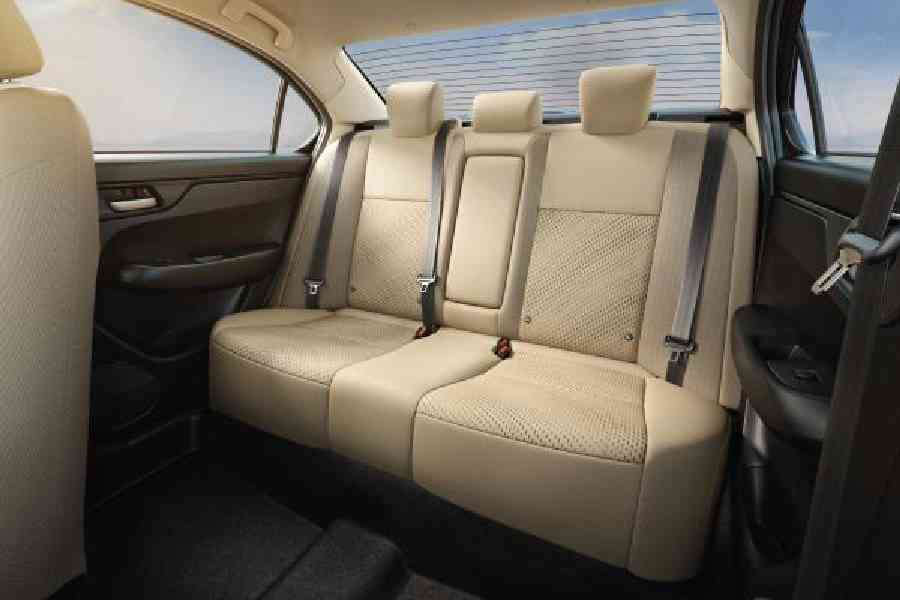
The rear seats get a full set of three-point seat belts but the head rests are fixed. There's decent legroom and headroom too
THE CALL
There is a certain simplicity and unfussiness about the Amaze that we found appealing. It sets out to do a bunch of things well and pretty much succeeds in doing so. We liked the ADAS suite. Honda seems to have taken out some items from the standard packages and is offering them as add-ons, things like some chrome garnishes, arm rests, mood lights and so on, while loading up on safety features and stuff that cannot be fitted aftermarket. Overall, the package seems to work.

